The Ultimate Guide to the Fastest WordPress Themes: Speed, Core Web Vitals, and SEO
Introduction: The Critical Need for Speed in the Modern Web
In the ultra-competitive landscape of the modern internet, speed is not a luxury—it is a foundational requirement for success. For the millions of website owners utilizing WordPress, the choice of a theme can be the single most defining factor in their site’s overall performance. A blazing-fast website ensures a positive user experience, reduces frustration, and significantly boosts conversion rates.
Conversely, slow loading times are the silent killer of online businesses. Studies consistently show that even a fractional delay—a mere one-second increase in page response time—can lead to a dramatic 7% reduction in conversions. Visitors today are impatient; if a site takes too long to load, they will inevitably abandon it, often leaving for a competitor with a better-optimized platform.
While WordPress is the world’s most popular Content Management System, its versatility is a double-edged sword. The vast ecosystem offers thousands of themes, ranging from minimal, highly efficient frameworks to bloated, feature-packed monsters. To navigate this complexity and ensure your success, you must prioritize themes engineered for performance from the ground up.
This exhaustive guide dives deep into the characteristics of speed, the new standards set by Google, and presents the definitive list of the fastest WordPress themes available on the market today.
Section I: Why Speed Matters—The Core Web Vitals Revolution
The era of merely measuring “page load time” is over. Google has established a clear, user-centric benchmark for site quality called Core Web Vitals (CWV). These metrics are fundamental SEO ranking signals, meaning your choice of theme directly impacts your visibility in search results.
A truly fast theme must excel in three key CWV areas:
1. Largest Contentful Paint (LCP)
LCP measures loading performance. It tracks how long it takes for the largest content element (such as a large image, video thumbnail, or block of text) on your page to become visible to the user. This metric ensures the user knows that the page is actually loading.
- Goal: LCP should occur within the first 2.5 seconds of the page starting to load.
- Theme Impact: A heavy theme burdened by large files, render-blocking CSS, or excessive JavaScript will drastically increase the LCP time, often forcing users to stare at a blank screen longer than necessary.
2. Interaction to Next Paint (INP)
INP (which recently replaced First Input Delay, or FID) measures responsiveness. It evaluates how quickly a page responds to a user’s action—like clicking a button, tapping a link, or submitting a form. A low INP score means the site feels fluid and responsive.
- Goal: INP should be under 200 milliseconds for a good user experience.
- Theme Impact: Themes that load too much complex JavaScript or include unnecessary animations and builders can monopolize the browser’s main thread, leading to high INP scores and frustrating delays when the user attempts to interact with the page.
3. Cumulative Layout Shift (CLS)
CLS measures visual stability. This metric quantifies unexpected layout shifts during the loading phase. This occurs when elements suddenly move down or jump around (e.g., a font loads, causing text to expand, or an ad loads later, pushing content down).
- Goal: CLS should be less than 0.1.
- Theme Impact: Poorly coded themes that fail to reserve sufficient space for images, advertisements, or web fonts are the primary cause of high CLS, creating a jarring and unreliable experience for the visitor.
By selecting a theme explicitly designed to achieve excellent Core Web Vitals scores, you are simultaneously optimizing for SEO, user engagement, and higher conversion rates.
Section II: The Methodology of Speed—What Defines a Lightweight Theme?
When comparing WordPress themes, speed can be attributed to several critical architectural factors. The fastest themes share a common DNA: minimalism, modularity, and clean code.
1. Minimal File Size and HTTP Requests
The core indicator of a fast theme is its size. The smaller the theme’s default payload, the faster it will transfer from the server to the user’s browser.
- Light Code Base: Many of the top performers, like GeneratePress or Neve, load their default installation with less than 50KB of transferred data. Compare this to older, feature-heavy themes that often start above 500KB.
- Fewer Requests: Every file (CSS, JavaScript, font, image) the browser requests adds latency. The best themes minimize these to single digits, often running on just 6-9 HTTP requests.
2. Vanilla JavaScript Over jQuery
jQuery is a powerful JavaScript library, but it requires the browser to load a large file first, which can cause delays and render-blocking issues. Modern, performance-focused themes increasingly use Vanilla JavaScript (plain JavaScript) for core functionality. This eliminates the dependency and dramatically improves INP scores and initial load times.
3. Modular and Component-Based Design
The fastest themes are often built with a modular structure. This means:
- Disable What You Don’t Use: If you are not running a WooCommerce store, the theme should allow you to disable all WooCommerce-related CSS and JavaScript files from loading, preventing unnecessary code bloat.
- Flexible Frameworks: Themes built on robust frameworks like Genesis or those that leverage the native Gutenberg Block Editor effectively tend to be lighter, as they rely on WordPress core features rather than custom, proprietary code.
Section III: The 12 Fastest WordPress Themes for Optimal Performance
We have analyzed dozens of themes, combining the recommendations from your original list with modern performance metrics, resulting in a selection of the very best performers optimized for Core Web Vitals.
1. Kadence WP (The Customization King with Speed)
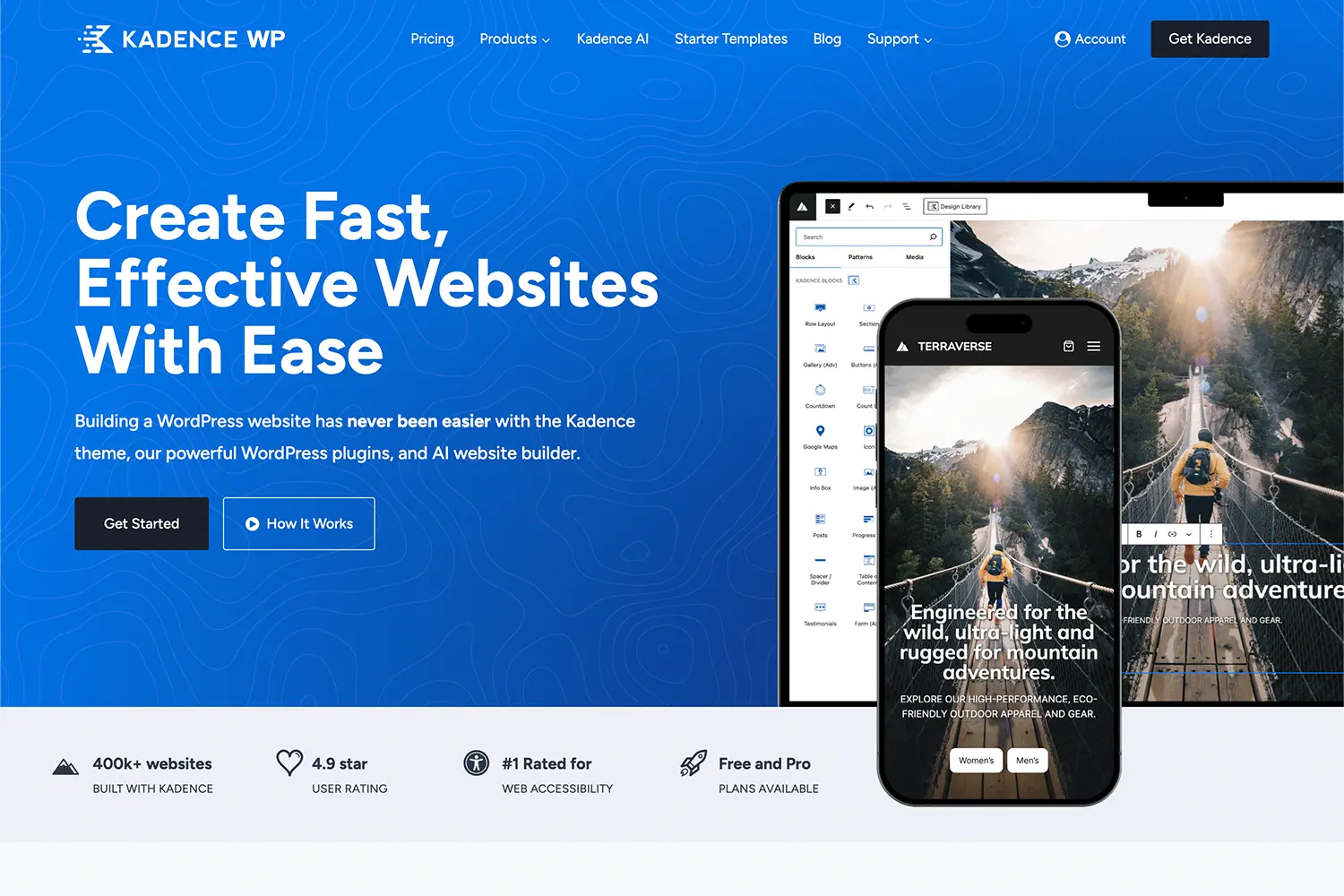
Kadence has quickly risen to prominence by offering an exceptional blend of speed, functionality, and deep customization options through its advanced header and footer builder, even in the free version.
- Performance Metrics: Kadence remains extremely fast despite its features. Tests frequently show load times around 426ms with a minimal number of HTTP requests (around 9). Its clean code ensures high LCP and INP scores.
- Key Features for Speed: It natively supports the WordPress Gutenberg Editor for creating high-performance pages without relying on third-party page builders. It features a robust design library and an excellent pre-built demo selection for rapid deployment.
- Best For: Users who want deep, granular design control (global colors, fonts, layouts) without sacrificing raw speed.
2. GeneratePress
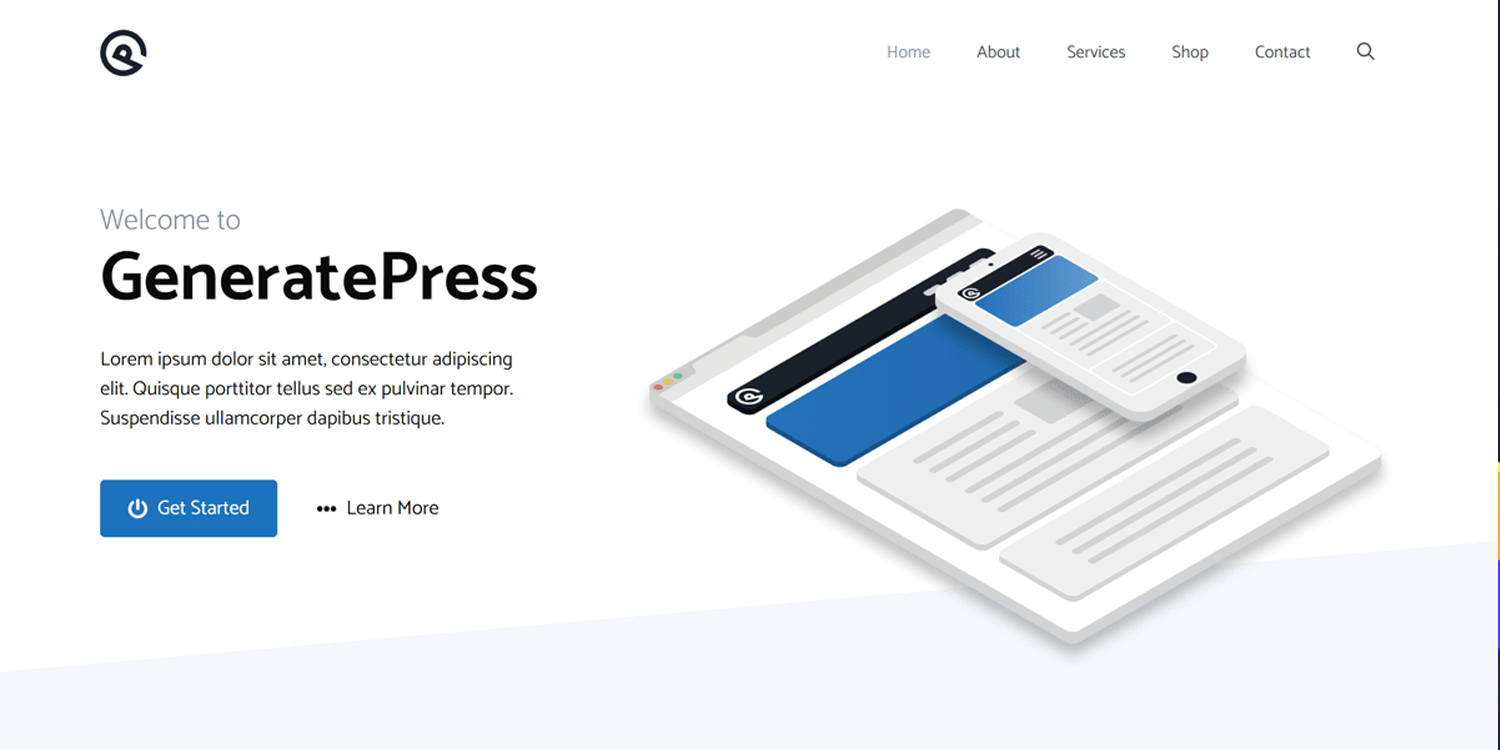
GeneratePress is consistently ranked as the absolute fastest and most lightweight theme available. It is often cited as the gold standard for performance enthusiasts and developers.
- Performance Metrics: The default installation loads with less than 37KB of transferred data and typically makes only 6 HTTP requests. It is engineered to minimize render-blocking resources.
- Key Features for Speed: Its modular design is the secret to its performance. Users can enable only the modules they need (e.g., disable blog layouts if running a static business site). It leverages the native WordPress Customizer and works seamlessly with page builders like Elementor and Beaver Builder while remaining extremely light.
- Best For: Developers, agencies, and users who prioritize speed and clean code above all else and prefer to build their site using blocks or a page builder.
3. Neve
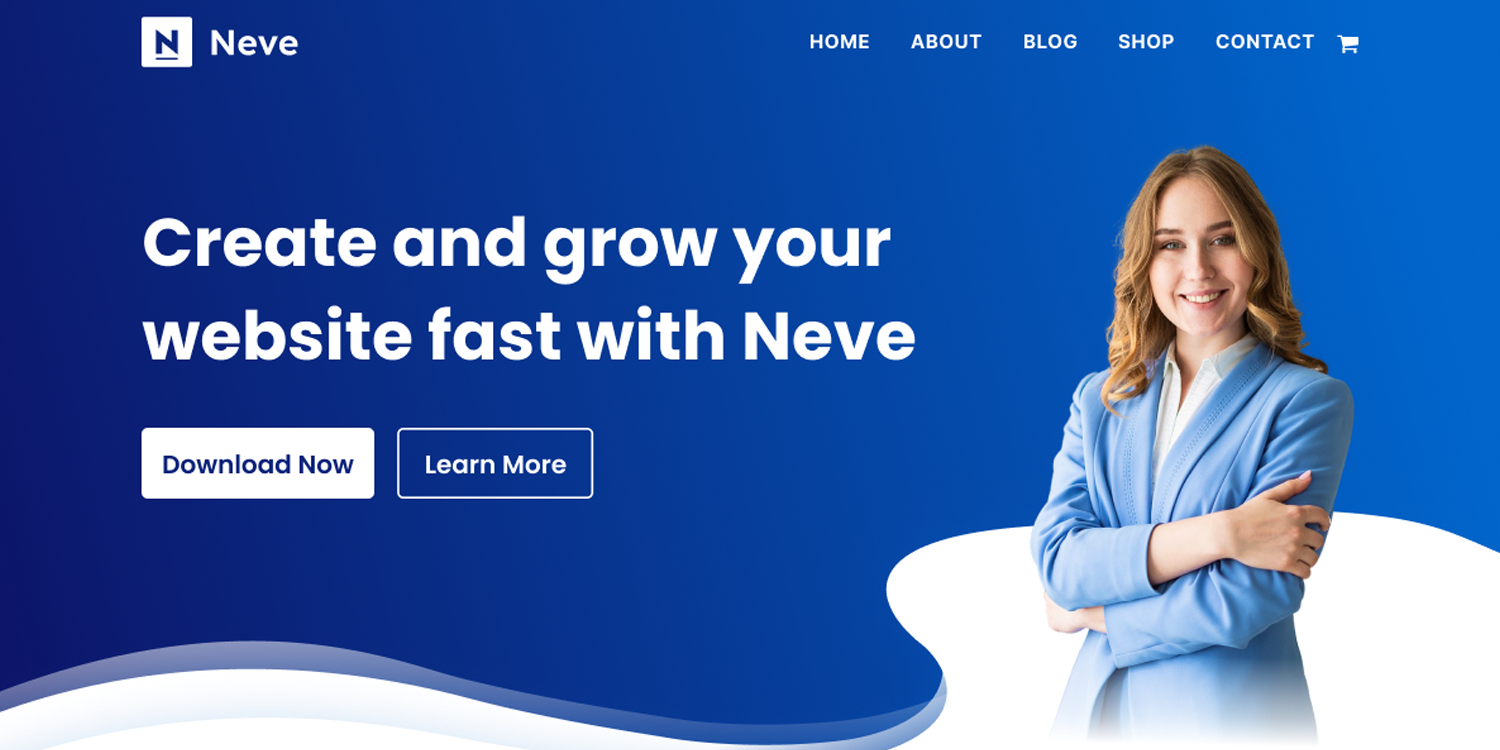
Developed by Themeisle, Neve is renowned for its speed and mobile-first design philosophy. It is highly optimized for performance metrics and is compatible with all popular page builders.
- Performance Metrics: The default Neve installation is tiny, loading with just 28KB of data and 6 HTTP requests. It consistently scores top marks on PageSpeed Insights and GTmetrix. Load times are often recorded at under 0.5 seconds.
- Key Features for Speed: It offers a fully customizable header and footer builder and allows you to control the website layout (contained or full-width) easily. Its architecture ensures responsiveness across all device types, which is essential for passing Core Web Vitals checks.
- Best For: Small businesses, blogs, and anyone requiring a versatile, modern theme that guarantees exceptional mobile performance.
5. Blocksy
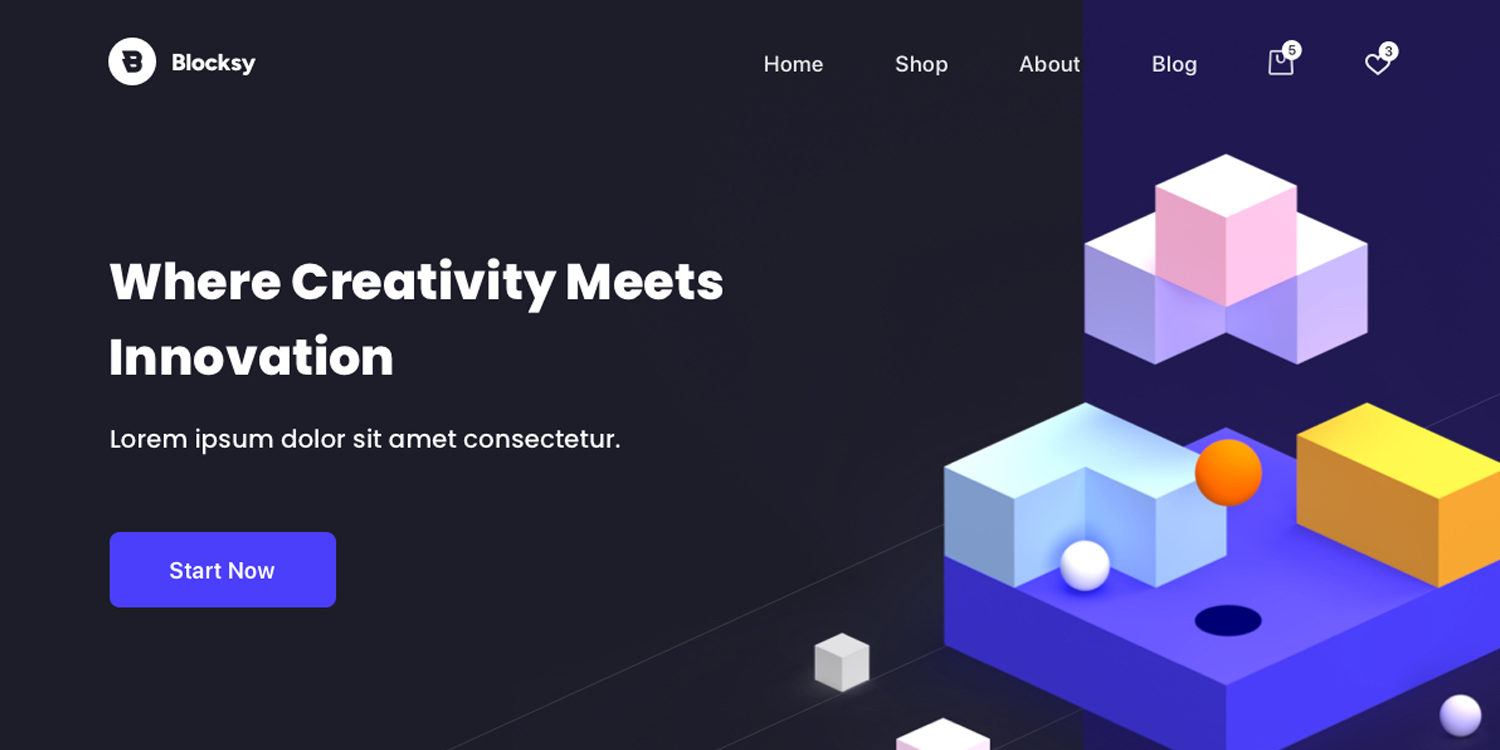
Blocksy is a next-generation WordPress theme built with the latest web technologies (React) and designed specifically to maximize the power of the Gutenberg Block Editor.
- Performance Metrics: Blocksy is incredibly quick, boasting PageSpeed scores near 100 and load times around 470ms with very few requests (often 6).
- Key Features for Speed: It uses smart loading of assets, ensuring resources only load when needed. It is fully responsive and translation-ready, making it an excellent foundation for any project. Its code is clean and highly extensible.
- Best For: Developers and users committed to using the native Gutenberg editor and seeking a feature-rich but ultra-fast modern theme.
5. Avada (The Top-Selling Multipurpose Theme)
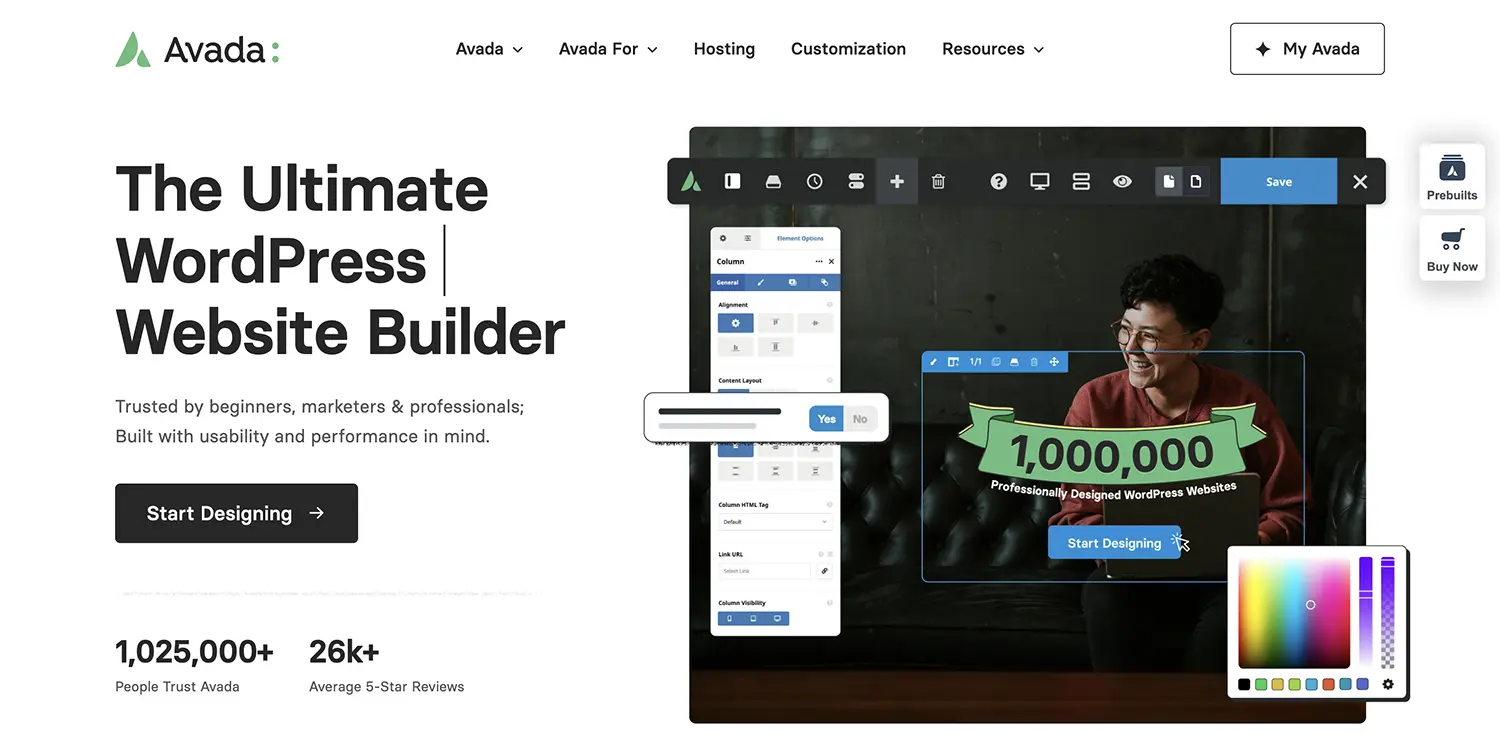
Avada, the all-time best-selling theme on ThemeForest, has followed a similar performance trajectory to Divi, dedicating considerable resources to speed optimization. It comes with the Fusion Builder, its proprietary visual editor.
- Performance Metrics: Avada’s performance improvements focus on dynamic asset compilation and loading only the necessary code for the elements used on a specific page. This modularity ensures a lighter footprint compared to older versions.
- Key Features for Speed: The Fusion Builder is now engineered to generate clean code. Avada includes performance options like WooCommerce optimization, script optimization, and critical CSS generation. It supports essential features like the Event Calendar and WooCommerce integration seamlessly.
- Best For: Large sites, agencies, and those needing a massive amount of functionality and demo content in a single package, now with guaranteed modern speed optimizations.
6. Hestia Pro

Developed by Themeisle, Hestia Pro is known for its elegant, sleek Material Design layout, making it ideal for professional and corporate-style one-page websites, though it fully supports multi-page sites as well.
- Performance Metrics: Hestia Pro is optimized for high performance, achieving fast loading times thanks to its streamlined design and compatibility with popular caching and optimization plugins. Its modular construction helps keep the load low.
- Key Features for Speed: It’s fully compatible with the Customizer for real-time changes, and its clean Material Design ensures visual stability (low CLS). Full WooCommerce support and a focus on speed make it a great option for professional websites.
- Best For: Businesses, startups, and anyone needing a sleek, modern, one-page website with a Material Design aesthetic.
7. Astra

With over a million active installations, Astra is one of the most popular themes for a reason: it perfectly balances speed with features. It was built with a performance-first approach, ensuring it remains incredibly light even with extensive functionality.
- Performance Metrics: Astra’s default setup is minimal, loading under 55KB of resources and making around 6 HTTP requests. It boasts exceptional LCP scores (often under 1.5s).
- Key Features for Speed: Like GeneratePress, it uses Vanilla JavaScript and offers a modular structure. Its vast library of Starter Templates allows for quick deployment of a beautiful, high-performance website across almost any niche, from blogs to massive e-commerce stores.
- Best For: Beginners and professionals needing a huge library of high-quality, pre-built, and optimized demo sites.
8. OceanWP (The WooCommerce Specialist)
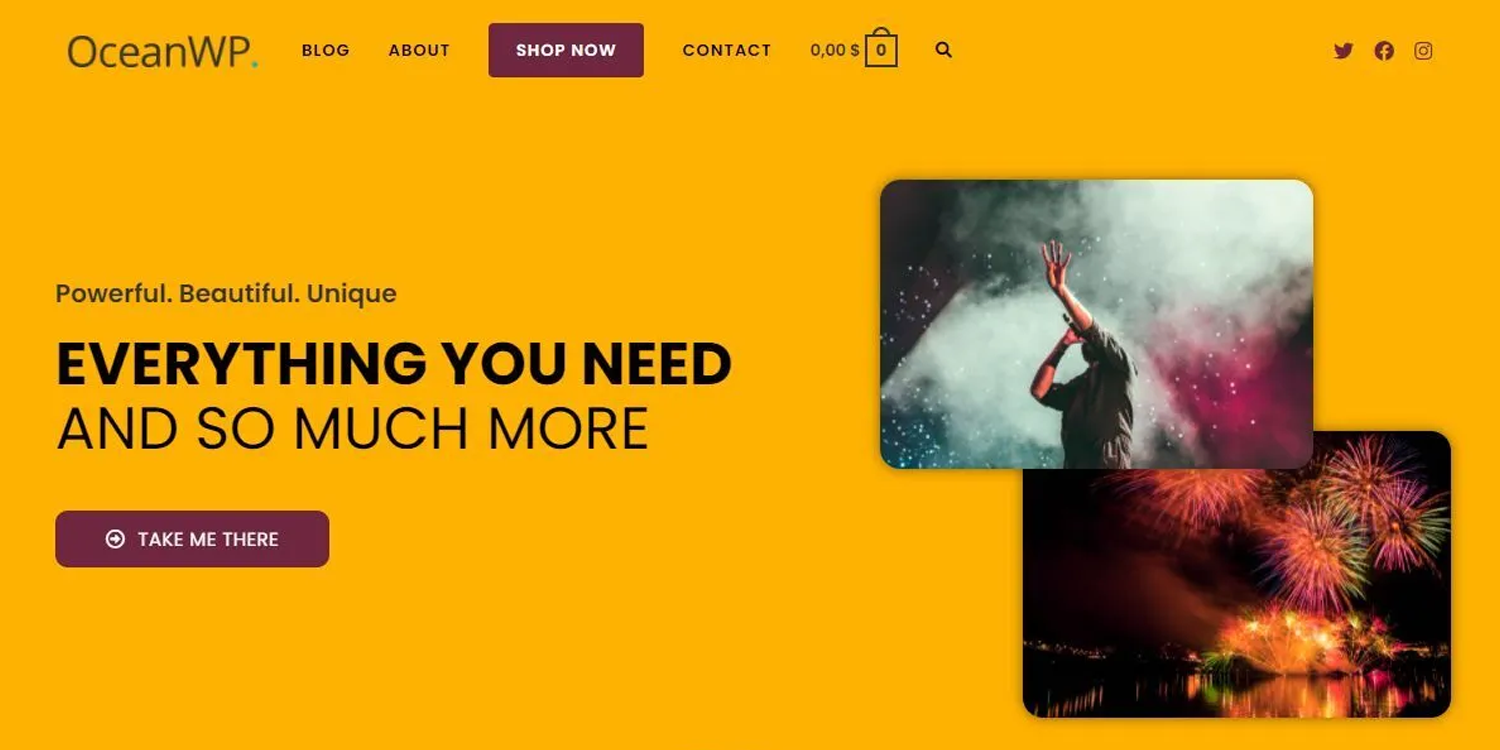
OceanWP is a highly versatile and popular multipurpose theme that excels in WooCommerce integration while maintaining commendable speed.
- Performance Metrics: OceanWP offers flexibility but still scores well. Its codebase is built to be lightweight, and its speed features include the ability to selectively disable many of the features that would otherwise cause bloat.
- Key Features for Speed: It gives users page-level control over scripts and styles, meaning you can stop unnecessary assets from loading on specific pages. Its robust WooCommerce integration is also optimized for fast checkout experiences.
- Best For: E-commerce sites and multipurpose users who want deep integration with WooCommerce without sacrificing speed.
Section IV: Beyond the Theme—Maximizing Your Performance Stack
Choosing a fast theme is the necessary first step, but it is not the only one. To ensure your website maintains its lightning-fast performance and consistently passes Core Web Vitals checks, you must implement a comprehensive optimization strategy.
1. High-Quality Hosting is Non-Negotiable
Your theme’s speed score relies heavily on the Time to First Byte (TTFB), which is almost entirely determined by your hosting provider. Cheap, shared hosting with slow server response times will sabotage even the fastest themes. Invest in managed WordPress hosting or a reputable cloud host.
2. Implement Aggressive Caching
Caching stores static copies of your pages, serving them instantly to repeat visitors and dramatically reducing the load on your server. Essential caching plugins like WP Rocket, LiteSpeed Cache, or Swift Performance are crucial for maximizing the performance of your chosen theme, often adding features like critical CSS generation and asset deferral.
3. Image and Media Optimization
Images are the most common cause of slow LCP scores. Always compress images using tools like Imagify or Smush, serve them in modern formats like WebP, and utilize lazy loading so that images only load when they scroll into the user’s viewport. Furthermore, ensure you always define image dimensions in your code to prevent Cumulative Layout Shift (CLS).
4. Utilize a Content Delivery Network (CDN)
A CDN, such as Cloudflare or BunnyCDN, stores copies of your website’s static files (CSS, JS, images) on servers located worldwide. When a user visits your site, the content is delivered from the server closest to them, reducing latency and boosting global load times.
Conclusion
The pursuit of speed in the WordPress environment is directly linked to success in search rankings and conversions. The days of accepting slow, bloated themes are over, replaced by a new generation of lightweight, modular, and performance-driven options.
Themes like Kadence, GeneratePress, Neve and Astra stand out as the clear winners in raw speed and minimal resource usage, offering the perfect foundation for achieving outstanding Core Web Vitals scores. Even feature-heavy themes like Divi and Avada have evolved to become respectable performers, demonstrating that you no longer need to choose exclusively between features and speed.
By selecting one of these proven, lightning-fast themes and pairing it with smart optimization techniques, you can ensure your WordPress website is future-proof, highly engaging, and positioned for maximum visibility and growth in the competitive digital landscape. Choose light, optimize constantly, and watch your success accelerate.
Share Post:







